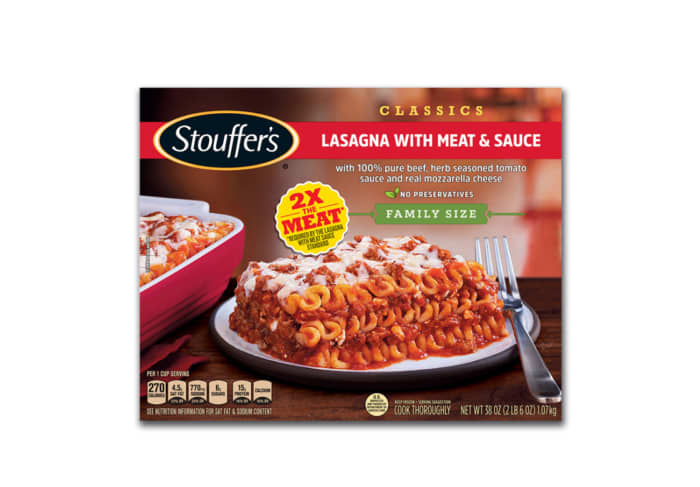Call it the lasagna index.
Neel Kashkari, president of the Federal Reserve Bank of Minneapolis, said in an interview with CNN on Tuesday that he gauges inflation and its impact on consumers by looking at the cost of a favorite family dinner item.
Namely, Stouffer’s frozen lasagna.
“I pay attention to grocery prices. There is this large tray of lasagna that I used to buy that used to cost around $ 16. Now it’s around $ 21,” said Kashkari in reference to the Stouffer’s product. “That’s my own little measuring stick of how inflation is going.”

Stouffer’s frozen lasagna comes in a variety of sizes and styles.
Stouffer’s
Kashkari said the Fed will likely have to continue raising interest rates to push inflation down. The Fed recently hiked its benchmark short-term rate to 4.75%, but Kashkari said he’d advocate for an eventual hike up to 5.4%. “I’m a little bit on the higher end than some of my (Fed) colleagues,” he said.
Kashkari isn’t the only one taking note of the higher price of the much-loved Stouffer’s product, which comes in a variety of sizes and styles, and what it means in terms of the big economic picture.
“I gauge inflation based on Stouffer’s frozen 4 meat lasagna,” one person tweeted last year.
MarketWatch reached out to officials with Nestlé NSRGY, +0.30%, the parent company of Stouffer’s, for comment about pricing, but didn’t receive an immediate reply.
Of course, most consumers have a key item or two in their supermarket basket that they track in terms of price changes, be it staples like bread and milk or a specialty product like frozen lasagna. And much attention has been paid of late to egg prices, which surged late last year because of the avian flu (though wholesale egg prices are now falling).
The Economist also created a “Big Mac index,” examining the cost of the popular McDonald’s sandwich across the world, as a way to look at currencies. That said, the publication noted that “Burgernomics was never intended as a precise gauge of currency misalignment.”
